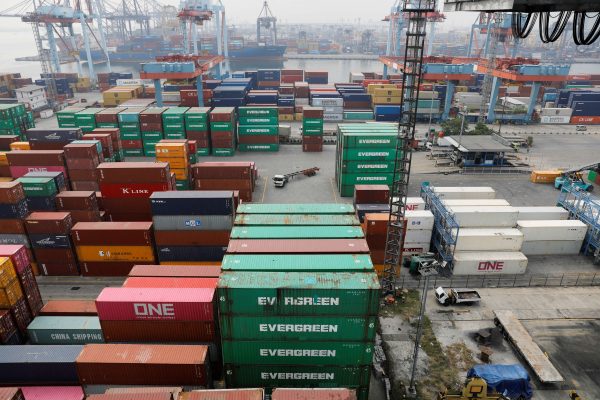Firms from different countries work together to produce final products by building production networks made up of buyers and suppliers. These networks have increased the flow of unfinished goods across economies such that the trade in intermediate goods now surpasses half of total world trade. There are several mechanisms by which imported inputs increase firm performance.
Higher quality intermediate inputs increase the quality of final products, increasing the demand for said products and raising firm profitability. They help reduce production costs because they are often more affordable than domestic inputs of similar quality. Imported inputs also contribute to a more efficient division of labour, increasing the productivity of firms as each node in the production network specialises in producing a single component of the final product.
The experience of Indonesian firms is consistent with this explanation. Importing inputs of greater value and variety has raised the productivity and export capacity of Indonesian manufacturing firms. The main benefits come from access to a broader range of inputs. These benefits are larger when inputs originate from developed countries such as Japan, a country from which Indonesia sources more than 15 per cent of its imported intermediate inputs.
The effects are larger still when imports originate from firms in East Asia. More than 40 per cent of Indonesia’s intermediate inputs are imported from Japan, China, South Korea, Taiwan, Singapore and Hong Kong. Their high-tech electronics, electrical appliance and automotive industries show that participating in regional production networks positively affects productivity.
These findings should inform policymakers in dealing with increasing calls for protectionism and mercantilism — trade strategies that see imports as a threat to the economy. Reducing restrictions on imported intermediate inputs would assist in promoting productivity and export growth.
Protectionism in Indonesia goes up and down. As in other countries, the pandemic has facilitated more protectionist measures. Indonesian President Joko ‘Jokowi’ Widodo wants to increase the local content or ‘domestic value added’ of Indonesian products and exports. Local content requirements have been promoted and enforced for products including electronics and pharmaceuticals. These policies require manufacturers to obtain local content certificates indicating the percentage of domestic content in their products.
While the majority of inputs in pharmaceutical products are imported and only a few drugs can be domestically produced, the government intends to increase the local content of pharmaceutical products to 55 per cent. One common justification is that Indonesia was able to produce COVID-19 vaccines with 79 per cent of local content.
Presidential Regulation 55/2019 stipulates that the domestic electric vehicle industry is similarly subject to a local content requirement of at least 35 per cent. Jakarta assesses local content based on manufacturer activities such as the production of electric vehicle components, research and development and assembly. Chinese electric vehicle company, SAIC-GM-Wuling, began producing electric vehicles in Indonesia with 40 per cent local content in the middle of this year.
In 2021, the Indonesian government enacted Government Regulation 28/2021, establishing a new legal framework to regulate industry access to imported inputs. It defines thousands of products as ‘intermediate inputs’ that, if imported, can be restricted by Jakarta. Government Regulation 29/2021 provides a more detailed mechanism for export and import approval based on neraca komoditas (commodity balance) — a national database system that tracks production, consumption and trade.
In March 2022, Jokowi issued Presidential Instruction 2/2022, which requires local governments to spend a minimum of 40 per cent of their goods and services expenditure budget on local products from micro-businesses, small enterprises and cooperatives.
While the government claims that such policies increase local production, create jobs and encourage technological transfer from abroad, they may have the opposite effect. These policies raise the cost of production inputs and encourage firms to be inward-looking rather than export-oriented.
Indonesia’s domestic electronics production may have increased, but export performance is stagnant and remains significantly lower than Vietnam, which does not have local content requirements. They are also in tension with Indonesia’s FTA commitments.
While these regulations intend to support domestic industrialisation, local content requirements may end up denying Indonesian firms the opportunity to import intermediate inputs that would otherwise increase their productivity and export performance.
Dr Deasy Pane is a planner at the Indonesian National Development Planning Agency (Bappenas) and a Senior Fellow at the Center for Indonesian Policy Studies (CIPS).
Arianto A Patunru is a fellow at the Arndt-Corden Department of Economics, Crawford School of Public Policy, the Australian National University.
This is an abridged version of an article published by the authors in the Review of World Economics (2022) here.

